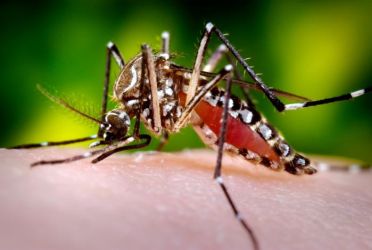
Yellow Fever Information
Yellow fever is a serious disease which occurs in Africa and South America. It is transmitted by the female Aedes aegypti mosquitoes and can be fatal.
Yellow Fever Endemic Zones And Distribution Vaccination may be required before visiting parts of Africa and South America considered to be endemic zones. This is to stop the disease spreading into other countries and to protect the travellers themselves.
The Yellow Fever vaccine is only available through approved Yellow Fever Vaccination Centres like the Sydney Yellow Fever Vaccination Clinic, Bondi. Travellers usually must visit specially approved centres to have the Yellow Fever vaccination.
Symptoms of Yellow Fever
If contracted, the yellow fever virus causes sudden onset of fever, four days after the bite, and may cause joint pain and vomiting. Most cases are mild, last less than a week, and the person makes a full recovery. Sometimes it is more serious. The liver may be damaged leading to jaundice - a yellowish tinge to the skin. Hence the name 'yellow' fever.
Eventually the blood's clotting system fails and bleeding occurs from the nose, gums, stomach and skin. Up to ten percent of those who contract yellow fever will die.
 In indigenous populations in endemic areas the fatality is about 5%. For travellers to rural parts of yellow-fever risk areas, however, the risk of contracting infection is high and the case fatality rate can approach 50%, even if the country has not officially reported the disease and does not require evidence of immunisation on entry.
In indigenous populations in endemic areas the fatality is about 5%. For travellers to rural parts of yellow-fever risk areas, however, the risk of contracting infection is high and the case fatality rate can approach 50%, even if the country has not officially reported the disease and does not require evidence of immunisation on entry.
The incubation period is generally 3 to 6 days but may be longer. Death usually occurs 7 to 10 days after the onset of the illness.
The initial or "acute" phase is normally characterized by high fever, general muscle pain, backache, shivers, headache, loss of appetite, nausea, and vomiting. Most patients improve and their symptoms disappear after three to four days. About 15 percent of those infected enter a "toxic" phase. In this phase, high fever reappears and can lead to shock, bleeding (from mouth, nose, eyes, and/or stomach), and kidney and liver failure.
Liver failure causes jaundice (yellowing of the skin and the whites of the eyes), which gives yellow fever its name. About half of the patients in the toxic phase die within 10 to 14 days. Persons recovering from yellow fever have lifelong immunity against reinfection.
Yellow fever is difficult to recognize, especially during the early stages, and can be easily confused with diseases including malaria, typhoid, rickettsial diseases, hemorrhagic viral fevers, dengue fever, and viral hepatitis. Diagnosis of yellow fever requires a blood test and trained staff using specialized equipment and materials.
Once contracted, there is no treatment for yellow fever. Persons with yellow fever should rest and drink plenty of fluids. Dehydration and fever can be treated with oral rehydration and paracetamol
Once upon a time, yellow fever was one of the great plagues of the world and there are still periodic outbreaks. The Yellow Fever disease arose in West Africa. It lives in the monkeys of the high jungle canopy without apparent adverse effects. Europeans are believed to have spread the disease to the Americas via mosquito larvae in the ships water barrels. The last major outbreak in the US was in 1905 in New Orleans. Although the disease has been eradicated from North America it still occurs in South America.
Current estimates indicate 200,000 yellow fever cases with 30,000 deaths each year, and almost all in sub-Saharan Africa where over 460 million people in 33 countries are at risk of infection.
